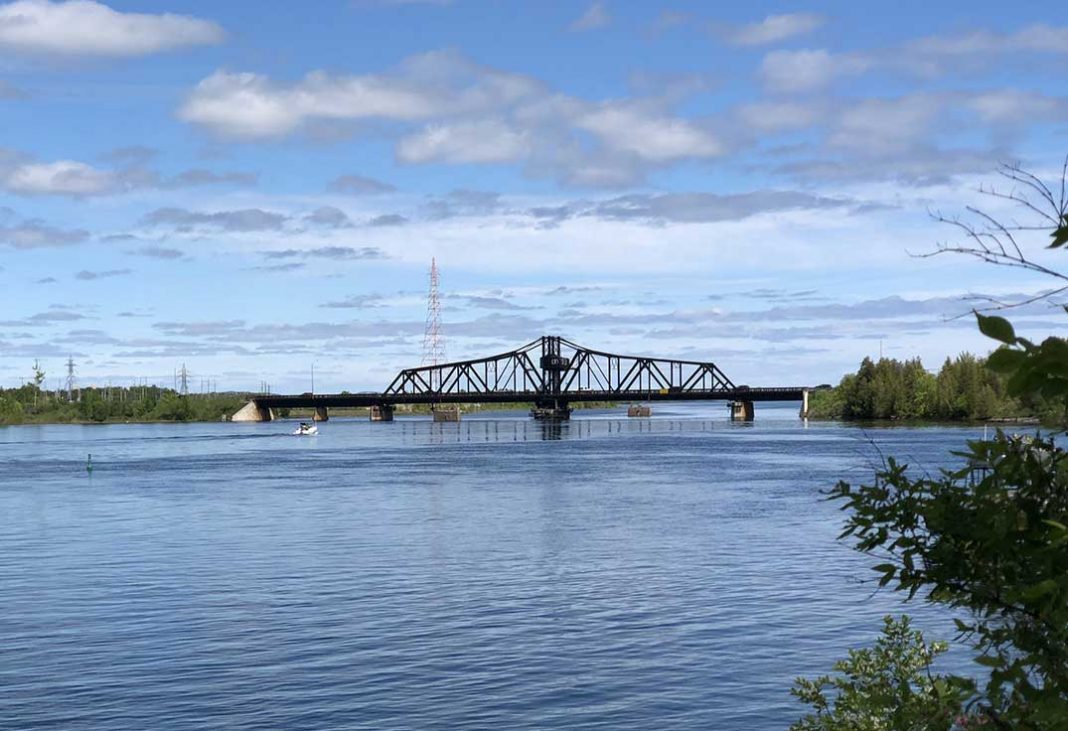LITTLE CURRENT—The future of the Little Current swing bridge as a heritage property is under evaluation in a separate assessment process from the study to determine the future of the road link between Manitoulin Island and the mainland, following standards and guidelines set forth by the Ontario Ministry of Tourism, Culture and Sport (MTCS).
“The standards and guidelines for conservation of provincial heritage properties (issued under section 25.2 of the Ontario Heritage Act) apply to all property owned or controlled by the Ontario government that is identified as having cultural heritage value or interest,” wrote MTCS issues co-ordinator Sadiyah Hira in an email to The Expositor.
The Ontario Ministry of Transportation (MTO) is the owner of the bridge. The Expositor was unable to identify whether MTO would retain ownership of the bridge after it is removed from service, or whether that ownership would transfer to MTCS.
“Ontario’s cultural heritage resources belong to present and future generations of Ontarians. Managing provincial heritage properties wisely is in the best interest of the people of Ontario,” stated the conservation standards document.
The guidelines apply to all provincial heritage properties owned by a ministry, a prescribed public body, or are occupied by either of the two provided the occupancy agreement allows them to make changes to the property.
The Little Current swing bridge falls under the category of ‘built heritage resources,’ which refers to one or more significant buildings, structures, earthworks, monuments, installations or remains that have cultural heritage value.
All heritage decisions must follow the standards and guidelines’ principles, including that decisions must be made in an open manner with stakeholder input, heritage properties are to receive regular, ongoing care so they do not deteriorate, every property’s unique heritage attributes are to be assessed to shape how they are preserved and the properties should continue to be used or adaptively re-used so long as the use does not impact heritage value. If no uses are possible, a property should be disposed of in a timely manner.
All heritage property owners are required to prepare a description of the property, gather and record information to back up its heritage value, determine its cultural heritage value based on the advice of ‘qualified persons’ and with appropriate community input, document the identification process with a written record of the research and evaluation and present a statement of cultural heritage value and a description of its heritage attributes.
Two kinds of heritage properties exist: provincial heritage properties and provincial heritage properties of provincial significance. According to Ms. Sadiyah, MTO has identified the 106-year-old swing bridge as a heritage property of provincial significance. It will have to submit a strategic conservation plan to MTCS for approval before moving forward.
All ministries are required to maintain heritage properties through continuous care as informed by the MTCS-approved plans for each site. They are implored to repair or conserve all building materials and finishes, as well as other components that are part of a structure’s heritage value, rather than replace them.
A requirement exists to keep and maintain visual settings and other physical relationships that add to the cultural heritage value of a property, which includes ensuring any new construction, visual intrusions or other interventions do not negatively impact a property’s heritage attributes.
However, if changes are required for health and safety requirements, ministries must seek advice from qualified persons on alternatives that can address concerns but cause a minimal impact.
Heritage properties that have been in use for a significant amount of time, such as the swing bridge, should continue in their existing uses to the greatest extent possible. If this cannot occur, the next-best alternative is to find other uses for the property that effect little to no changes to its heritage. This is referred to as adaptive re-use.
Another requirement exists to ensure that the cultural heritage value of a property is communicated so that the public can better understand and appreciate the significance of a site.
Should no adaptive re-use options fit a site, the ministry in charge of a property is directed to take timely steps to mothball or otherwise dispose of the property. Removal or demolition is to be considered as a last resort and only an option after a heritage impact assessment and public engagement.
MTCS would have to approve of any future removal or demolition plans, should this ever arise. MTCS could also add conditions to any removal, demolition or transfer of the property and would only consent to such action if all alternatives had been assessed.






